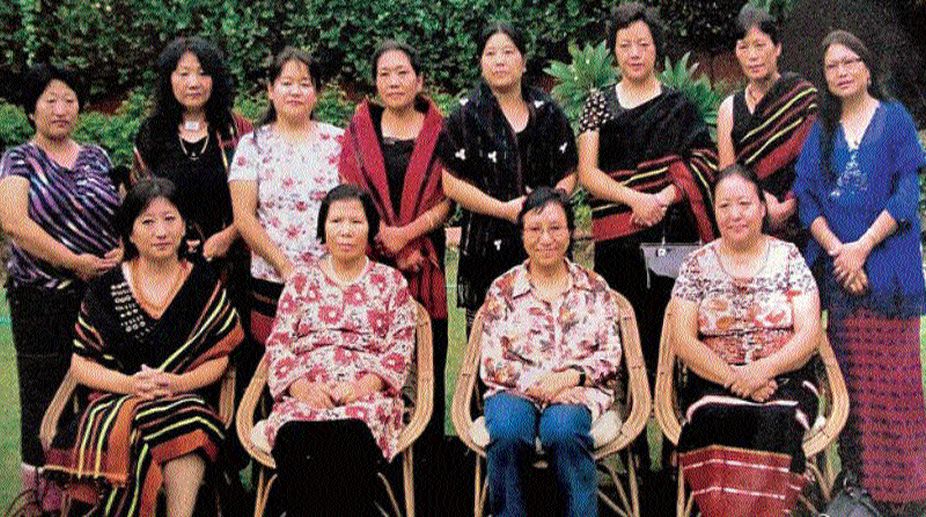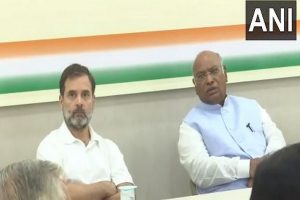The night of 2 February was reminiscent of “The Night of the Guerrillas” during the late 1950s and early 60s. Kohima lay burning while the Naga public, by and large, stayed cowering indoors. The only difference being that this time, it was the Nagas themselves who did the burning while the Indian Army stood by, ready to intervene should it be called upon to restore order.
The immediate cause of all this was the “issue” of holding of elections to the urban local bodies with 33 per cent reservation for women and ego clashes between various Naga tribe organisations and the state government. People think men are suppressing women’s rights. The Naga tribe bodies have been opposing the Municipalities Act from the time it was enforced. The tribe bodies have been pleading with the government to postpone it, so that proper consultations could take place. On the other hand, the government took the view that consultations had already been held. The spoiler in the equation was the powerful Naga Mothers’ Association and its joint action committee on women reservation, who saw the entire issue only through the prism of women’s rights, and precipitated events with their petitions in the courts.

What everyone failed to realise were the undercurrents that had been at work in Naga society even if these may not have been visible. First, most Nagas have become disappointed with the peace talks the NSCN(I-M) is holding with the Centre not yielding results even after nearly two decades. They blame both the Centre and Naga political groups for not being able to settle their differences and coming together to thrash out an acceptable and workable solution. Their refusal to budge from their positions has angered and frustrated the Nagas. Strong feelings had been, and are, simmering below the surface.
Secondly, most Nagas have now realised that they needed to protect whatever little protections the Constitution provides. This was where Article 371(A) became so important to them. Delhi’s arrogant attitude, particularly after the BJP came to power, did not help to assuage or calm Naga feelings. The summary extension of the Armed Forces (Special Powers) Act and the fencing on the Indo-Myanmar border, without even consulting the public, are just two examples. Demonetisation and the suffering this caused only added to apprehension. What is in everyone’s mind was “If Delhi can do this to the rest of India, what about us?”
And they have also lost faith in the state government and cynically think the people’s representatives are there only to make money and willingly dance to Delhi’s tunes.
Thirdly, it did not make too many waves to the same degree among all the tribes, but accompanying the ULB elections, under the same law, was the issue of taxation by the new municipalities/town committees particularly if Smart Cities and Special Purpose Vehicles were also involved. Taxation has always been an abhorrent issue where Nagas are concerned. It led to the killing of the first British political officer in the Naga Hills in 1879 and the war against the British that followed. That ended in 1880 with the Battle of Khonoma, with a British soldier being awarded the Victory Cross (VC), the first in the Naga Hills.
Taxation was again the cause for the rise and sustenance of Naga nationalism apart from other reasons. “Ura Uvie!” encapsulated the basic idea. The new Indian law that allows attaching personal assets for failure to pay taxes, would seem to give credence to this original fear of the Nagas! Again the Nagas have been vehemently opposing the forcible taxations imposed by the Naga political groups (as militants groups are known) although they claim they are fighting for the cause of the Naga people.
The NSCN-IM’s manifesto about nationalising private property, particularly land, only gives rise to more apprehensions about their leadership. Land, particularly in villages, gives identity to Nagas and without this they would become non-entities.
Fourthly, the NMA, and particularly those in the forefront of the women reservation issue, failed to grasp these undercurrents or even take into consideration their own cultural values. Possibly affected by modern feminism, they may have thought they were championing the cause of Naga women and that they would be remembered as pioneers of women emancipation in Naga society. They only managed to jump in where even Naga men fear to tread by going against their own village communities and tribe bodies.
According to press reports, the tribe bodies were not against women participation in decision-making. For example, the president of the Angami Public Organisation was even quoted as having suggested that women be nominated to these urban bodies even up to 40 or 50 per cent. But the women had made up their minds and were not willing to listen to others’ views. They were content with intimidating the state government and with their petitions in the High Court and Supreme Court. The result was not just the loss of lives, property and misery all across Nagaland, but the NMA now lies broken and in tatters, with several tribes’ women bodies having withdrawn from it and the committee on women reservation itself being dissolved. Far from advancing the cause of Naga women, their position may actually have regressed for several decades.
Fifthly, the state government became obtuse to the pleadings of all sections of Naga society. Tribe after tribe opposed the immediate holding of elections, asking only for deferment, so that proper consultations could take place. The government kept harping on Constitutional obligations to holding the ULB elections, seemingly being totally intimidated by the women and court decisions. They even went back on an agreement inked with the JCC and the NBCC on the eve of the elections. What was forgotten in all these was that first and foremost, the government is accountable to the people without whom there would be no parliamentary democracy in the first place.
What we have today is a further division of an already fragmented Naga society. Far from being encumbered, the Naga women seem to have proved how powerful they can be by intimidating the state government and dividing Naga society as they like.
There seems to be two things that are out of character. Naga women have always been known for their “healing touch”.Throughout Naga history, while the men were out making wars, they took care of the family. When their men died or they came back wounded or disabled, their responsibilities grew. In many ways, Naga society survived because of Naga women. In traditional Naga society, even in the Angami one, women have always occupied a special place.
Even at Khonoma, birthplace of the late Naga supremo Angami Zapu Phizo, considered by many as a place where women did not count at all, the women were held in high esteem. It was only that Khonoma people considered there were areas of responsibility for men and women, both separate but equally important. This is not understood by those from outside. But an easy example is that at any important ceremony, or feasts of merit, could not be held without women. There are also safeguards for their protection as any insult to them is considered an insult to the family/clan. There is, of course, no gainsaying that they are the hardest working and most contributing members of the community, which everyone acknowledges. Even in the NMA and in recent times, the women had gained high respect with their social activities and particularly their “Shed No More Blood” campaign among NPGs. Every Naga respected them and they were held in high esteem. But this time, they lost sight of the ground realities and their footing. They have done immense damage to a society, which has been wounded and hurting and which they had been helping to heal. Their loss is the loss of Naga society too because they formed just about the only neutral and objective organisation left whose voice was respectfully listened to. What a tragedy, a hope-filled story has become divided and disintegrated. It must not end here. The big question is, who will pick up the pieces?
The other story that seems out of character is that of chief minister TR Zeliang. When one is at the top, he has nowhere to go but to take whatever is thrown at them and say “the buck stops here”. Blaming anyone or making excuses can only make things worse. And procrastination has never solved anything. Zeliang became a surprise chief minister of Nagaland in 2014. Surprise because he came from one of the “backward” and smallest tribes and districts of Nagaland – Pere, which has only two MLAs – and would not have made it to the hot seat under ordinary circumstances. Obviously he was a compromise candidate, after three-time chief mister Neiphiu Rio quit to contest the parliamentary election. His government has managed to survive till now despite challenges from dissidents and personal attacks. He went on to achieve some firsts — partially due to benefits accruing from previous governments. All in all, Zeliang had shown he was a shrewd politician.
But in this case, something apparently went wrong which is out of character. Everybody knew that there were a lot of differences within the ruling Naga Peoples’ Front — could it have been just the 33 per cent women reservation or any possible intimidation from the Naga women? More people are willing to believe that the state government only wanted the money that would come in the wake of the ULB elections. But it is still not totally convincing because the consequence would be political suicide and hara-kiri by someone who has proved himself to be a shrewd politician. Was he being the fall guy for some political play that had gone awry? What happens now will depend greatly on the chief minister and the party president. Naga society today lies in tatters, worse than ever before. It needs to do serious reflection on what is happening to it and what are its priorities.
The biggest gap in society is that there is no longer a single Naga organisation that can think for and speak with objectivity, rationality and without fear or favour, and be respected by the Naga public for its views.
It is of no use talking about who destroyed such institutions and other structures of our society; we all contributed directly or indirectly. Will this be the next first step towards our peoplehood as Nagas learn baby steps to start walking again?
The writer is a veteran journalist and author of naga imbrogio, is based in Kohima












